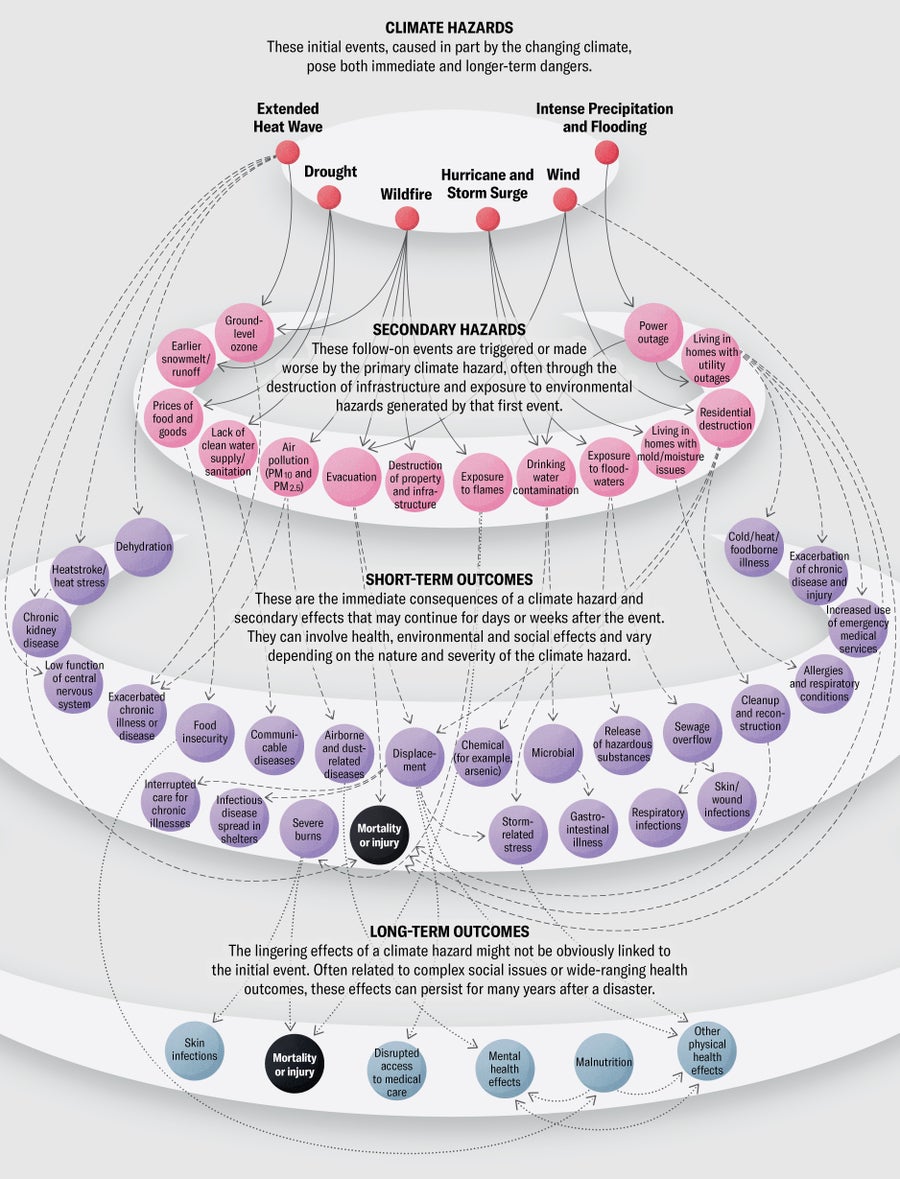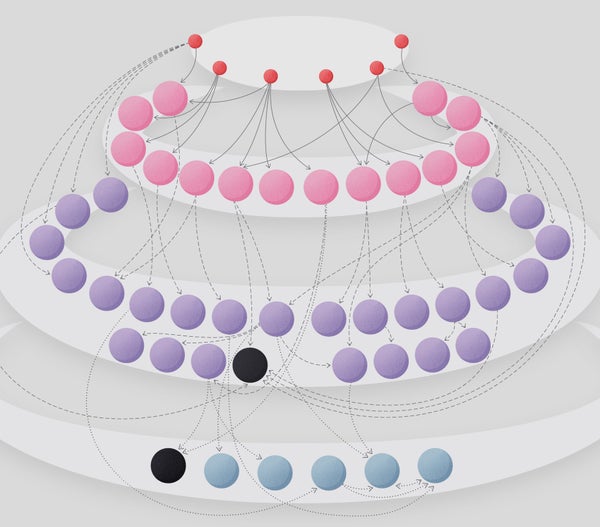On supporting science journalism
If you're enjoying this article, consider supporting our award-winning journalism by subscribing. By purchasing a subscription you are helping to ensure the future of impactful stories about the discoveries and ideas shaping our world today.
When people imagine the aftermath of a natural disaster, skin infections and gastrointestinal illnesses aren't usually the problems that come to mind. But these conditions are embedded in a cascade of extensive and often unexpected consequences of wildfires, hurricanes, and other calamities related to climate change. A report entitled Atlas of Disaster connects the dots between the initial effects of climate hazards and the longer-term outcomes. Most of the U.S. is already feeling the impact—90 percent of American counties experienced a climate-related disaster in the decade from 2011 to 2021, and some have seen many. The damage is even worse in numerous other parts of the world.
“Climate change is here, and our communities are suffering,” says report co-author Amy Chester, managing director of Rebuild by Design, a nonprofit founded after the devastation of Hurricane Sandy in 2012. She hopes this research will shift the national discussion away from what to do if climate disasters occur and toward what we can do now that they are happening.

Credit: Federica Fragapane; Inspired by “Cascading Impacts of Climate Events” graphic by Geethanjali MR, in Atlas of Disaster, from Rebuild by Design; Rebuild by Design sources: Preparing for Regional Health Impacts of Climate Change in the United States, Centers for Disease Control and Prevention Climate and Health Program, July 2020; Human Health and the Climate Crisis, by Gail L. Carlson, Jones & Bartlett Learning, January 2022; “Health Effects of Coastal Storms and Flooding in Urban Areas: A Review and Vulnerability Assessment,” by Kathryn Lane et al., in Journal of Environmental and Public Health, Vol. 2013, http://dx.doi.org/10.1155/2013/913064
